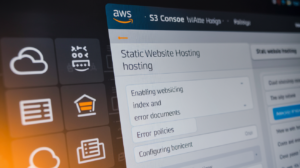Remember the last time your app crashed because too many users showed up at once? Yeah, that kind of pain stays with you.
Pub/Sub architecture might be the relief you need. It’s like the traffic controller for your data, making sure messages flow exactly where they need to go without overwhelming your system.
At its core, the publish-subscribe pattern separates message senders from receivers, creating systems that can handle massive scale without breaking a sweat. No more tight coupling, no more cascade failures when one service hiccups.
But here’s what most tutorials won’t tell you about Pub/Sub: implementing it wrong can create more problems than it solves. So what exactly separates a brilliant implementation from a disaster waiting to happen?
Understanding Pub/Sub at a Glance
A. The Core Concept: Decoupling Publishers and Subscribers
Pub/Sub is like a digital newspaper delivery system where the writer doesn’t need to know who’s reading. Publishers blast messages to topics, not specific recipients. Subscribers grab only what interests them without bothering publishers. This separation is pub/sub’s superpower – letting both sides evolve independently while the system handles all the delivery details.
B. How Pub/Sub Differs from Traditional Messaging
Traditional messaging is like passing notes – you need the recipient’s address and wait for confirmation. Pub/Sub? It’s more like posting on a bulletin board. You don’t track who reads it. This fire-and-forget approach means:
| Traditional Messaging | Pub/Sub Messaging |
|---|---|
| Point-to-point | One-to-many |
| Synchronous options | Purely asynchronous |
| Message queuing | Topic-based routing |
| Tight coupling | Loose coupling |
| Direct addressing | Content-based filtering |
C. Key Components of a Pub/Sub Architecture
A solid pub/sub system needs five critical pieces working together. First, publishers that generate events. Second, topics that organize message streams. Third, the broker – your traffic controller handling delivery. Fourth, subscribers hungering for specific data. Finally, message filters that let subscribers say “only send me what matters.” This architecture scales beautifully as components can be added or removed on the fly.
D. Real-World Pub/Sub Examples You Use Daily
Pub/Sub is everywhere once you know what to look for. Social media? That’s pub/sub when celebrities post updates to millions of followers. Stock trading apps publish market changes to interested investors. Smart home systems use it when your doorbell camera triggers notifications. Even your favorite news app uses pub/sub to deliver breaking stories to your phone. You’re swimming in pub/sub systems daily without even realizing it.
The Mechanics of Publish-Subscribe Architecture
The Mechanics of Publish-Subscribe Architecture
A. Message Publishing Process Explained
Think of pub/sub as a newspaper delivery system for your data. Publishers toss messages into specific topics without caring who’s reading them. The messaging service handles all the heavy lifting – receiving the message, validating it, storing it temporarily, then pushing it out to all interested subscribers. No direct connections needed!
B. Subscription Models and Message Delivery Guarantees
Pub/sub offers two main flavors of message delivery: push and pull. With push, messages fly straight to subscribers as they arrive. With pull, subscribers grab messages when they’re ready. Systems also provide guarantees ranging from “at-least-once” (might get duplicates) to “exactly-once” (perfect delivery, but harder to achieve).
C. Topic Management and Message Filtering
Topics are like channels subscribers tune into. But nobody wants all messages. That’s where filtering shines – subscribers can say “only send me messages about failed payments” or “just the high-priority stuff.” This keeps systems efficient, delivering only what each component actually needs.
D. Handling Failed Deliveries and Dead Letter Queues
Even great systems fail sometimes. Messages might bounce because a subscriber crashed or the payload was corrupted. Dead letter queues catch these message misfits, storing them separately for troubleshooting. You can set retry policies too – “try 3 times, wait 5 seconds between attempts” before giving up.
E. Synchronous vs. Asynchronous Communication Patterns
Pub/sub thrives on asynchronous communication. Publishers fire and forget, moving on immediately while subscribers process messages at their own pace. This contrasts with synchronous patterns where senders wait for responses. Async decoupling means your system keeps humming even when parts slow down or temporarily fail.
Benefits of Pub/Sub for Modern Applications
Benefits of Pub/Sub for Modern Applications
A. Achieving True Scalability Through Loose Coupling
Pub/Sub shines when your systems need room to grow. By decoupling publishers from subscribers, you’re free to add new components without touching existing ones. Think about it – your payment service can publish events without knowing (or caring) how many services are listening. This separation is gold for scaling systems that need to handle unpredictable load spikes.
B. Enhanced Reliability and Fault Tolerance
When things go wrong (and they will), Pub/Sub has your back. If a subscriber crashes, messages wait patiently in the queue until it recovers. Publishers keep on publishing, blissfully unaware of any downstream issues. This built-in resilience means temporary hiccups don’t cascade into system-wide failures – critical for apps that simply can’t afford downtime.
C. Simplified Integration Between Diverse Systems
Got a polyglot ecosystem with services written in Java, Python, and Go? Pub/Sub doesn’t care. It speaks a universal language of events that bridges technology divides. New legacy system? New microservice? Just hook them into your Pub/Sub backbone and watch them communicate without complicated point-to-point integrations that turn into spaghetti over time.
D. Supporting Event-Driven Architecture Patterns
Pub/Sub is the beating heart of modern event-driven architectures. It enables elegant patterns like event sourcing and CQRS that would be nightmares to implement with traditional request-response models. Your systems become responsive rather than reactive, processing events as they happen rather than constantly polling for changes – a game-changer for real-time applications.
Implementing Pub/Sub in Your Technology Stack
Implementing Pub/Sub in Your Technology Stack
A. Popular Pub/Sub Services Compared (Kafka, RabbitMQ, Google Pub/Sub)
Picking the right pub/sub tool feels like choosing a car – they’ll all get you there, but the ride’s different. Kafka shines with massive throughput and persistence, making it perfect for data analytics. RabbitMQ offers flexibility with multiple protocols and lower latency for immediate needs. Google Pub/Sub removes infrastructure headaches with fully-managed scaling. Your choice ultimately depends on your specific performance requirements, team expertise, and budget constraints.
Common Pub/Sub Patterns and Use Cases
Common Pub/Sub Patterns and Use Cases
A. Microservices Communication Made Seamless
Microservices need to talk to each other without getting tangled up in who’s who. Pub/sub swoops in like a traffic controller, letting services broadcast messages without knowing who’s listening. This decoupling magic means you can add, remove, or scale services on the fly without the whole system crashing down. Your authentication service can publish “user logged in” events, and five different services can react accordingly—no direct connections required.
B. Real-Time Analytics and Data Processing Pipelines
Ever wonder how Netflix knows exactly what you want to watch next? Behind the scenes, a pub/sub system is probably churning away. As users click, pause, and binge, events flow into analytics pipelines where they’re transformed, aggregated, and fed into recommendation engines—all in real time. The beauty is in the separation: data producers keep producing without waiting for processors to catch up, while processors handle the flow at their own pace.
C. IoT Device Management at Scale
Managing millions of smart devices would be impossible without pub/sub. Imagine trying to track the status of every connected thermostat, security camera, or factory sensor through direct connections—nightmare material. With pub/sub, devices publish their status changes, measurements, and alerts to topics, while monitoring systems subscribe only to what matters to them. A single temperature reading can trigger HVAC adjustments, energy usage calculations, and anomaly detection simultaneously.
D. Building Responsive User Interfaces with Pub/Sub
The snappiest apps use pub/sub behind the scenes. When a user likes a post, that action publishes an event that updates the like counter, notifies the post creator, refreshes recommendation algorithms, and updates activity feeds—all without reloading the page. The frontend subscribes to relevant topics and updates components in real-time when new messages arrive. This pattern creates that magical feeling when everything just updates instantly.
E. Cross-Region and Multi-Cloud Architectures
Cloud boundaries don’t have to be communication barriers. Modern pub/sub systems extend across regions and even different cloud providers, creating a unified messaging fabric. A retail company might publish inventory updates from AWS in the US that trigger restocking workflows in Azure in Europe. The pub/sub layer handles all the complex routing, delivery guarantees, and security—leaving you free to build business logic without worrying about the plumbing.
Overcoming Pub/Sub Implementation Challenges
Overcoming Pub/Sub Implementation Challenges
A. Handling Duplicate Messages Gracefully
Ever received the same text message twice? Annoying, right? In pub/sub systems, it’s a common headache. Implementing idempotent consumers is your best defense – they process messages with the same ID exactly once. Smart message deduplication strategies can save your system from customer complaints and data inconsistencies.
B. Ensuring Message Ordering When It Matters
Order matters. Think about processing a “create account” message after a “delete account” message – disaster! When sequential processing is crucial, partition your topics by entity ID or implement sequence numbers. Some systems like Kafka maintain order within partitions automatically, giving you one less thing to worry about.
C. Managing Backpressure in High-Volume Systems
Your system just went viral. Congratulations! Now your publishers are firing messages faster than consumers can handle them. Without backpressure strategies, your system crashes and burns. Buffer wisely, implement throttling mechanisms, or dynamically scale consumers. Remember: a system that can’t say “slow down” is a system waiting to fail.
D. Debugging and Monitoring Distributed Messaging
Tracking down issues in distributed pub/sub systems feels like finding a needle in a digital haystack. Strong observability is your flashlight. Implement correlation IDs to trace message journeys, set up comprehensive metrics dashboards, and configure alerts for unusual patterns. The best pub/sub operators can tell you exactly where a message got stuck.
The publish-subscribe architecture is transforming how systems communicate in our increasingly connected digital landscape. From its fundamental decoupling of publishers and subscribers to its ability to handle massive event streams with reliability and resilience, Pub/Sub provides the architectural foundation that modern, scalable applications require. Whether you’re working with microservices, IoT systems, or real-time analytics, the patterns and implementation strategies discussed offer a pathway to more flexible, maintainable, and scalable software systems.
As you consider integrating Pub/Sub into your technology stack, remember that success depends on thoughtful design choices that address the challenges of message ordering, delivery guarantees, and system observability. Start small with a well-defined use case, choose the right Pub/Sub technology for your specific needs, and gradually expand as your team gains experience. The investment in this architectural pattern will pay dividends as your systems grow in complexity and scale, enabling your applications to evolve with changing business requirements while maintaining performance and reliability.




















